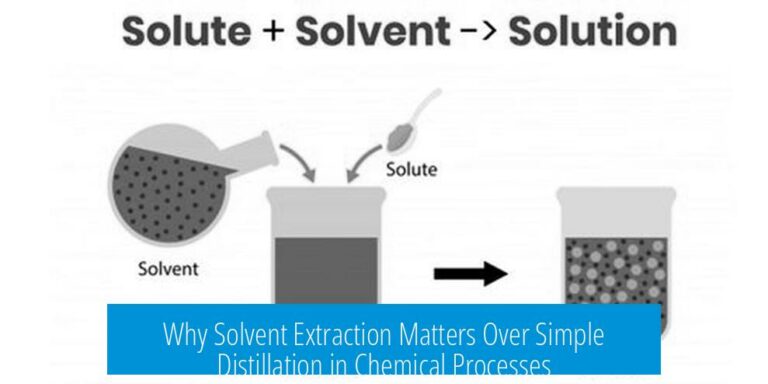Where Could I Get Pure Carbon?
Pure carbon is accessible through several sources and production methods, but obtaining truly pure carbon requires controlled preparation. Common materials like charcoal, graphite, or diamond provide carbon in varying purity levels, while laboratory methods can produce purer forms through chemical and thermal processes.
Common Sources of Carbon
Charcoal
Charcoal is widely available and often used as a carbon source. However, its purity varies. Most charcoal contains impurities such as minerals and ash. The empirical formula is approximately C7H4O, indicating the presence of hydrogen and oxygen in addition to carbon.
Impurities originate from salts and minerals absorbed during wood growth, which leave metal oxides upon burning. These residues increase ash content and reduce carbon purity.
For applications not requiring extremely pure carbon, charcoal is sufficient. However, it is inadequate for uses needing near 99% purity.
Graphite Powder
Graphite powder obtained from art supply stores or specialty distributors offers a higher carbon content. It is generally purer than charcoal but may contain additives such as clay if sourced from pencil graphite.
Graphite is a crystalline form of carbon known for its layered structure and high conductivity. It offers a relatively pure carbon base but purity can vary depending on the source.
Diamond
Diamonds consist almost entirely of carbon atoms arranged in a crystal lattice, qualifying them as pure carbon. Despite being pure, diamonds are expensive and impractical for typical carbon source needs beyond scientific or industrial applications.
Producing Pure Carbon
Making Charcoal with Higher Purity
Producing charcoal personally under controlled conditions helps reduce contamination and improve purity. The process involves slow pyrolysis of organic material in limited oxygen. This method allows users to select feedstock carefully and refine carbon quality.
It demands effort and patience but yields better purity compared to commercial charcoal, making it useful for specialized chemical or experimental purposes.
Thermal Decomposition of Sugar
Heating sugar to very high temperatures causes carbonization, forming amorphous carbon. This method can generate carbon powder free of many impurities present in wood-based charcoal.
The process typically involves placing sugar in a kiln or heat-resistant container and applying heat until dark residue appears. The carbon produced is not crystalline but offers acceptable purity.
Chemical Production Using Sulfuric Acid and Sugar
Reacting concentrated sulfuric acid with sugar dehydrates the sugar molecules, leading to the formation of a carbonaceous foam. This product is rich in carbon and reasonably pure.
While simple chemistry, it requires careful handling due to the corrosive nature of sulfuric acid. The resulting carbon is mainly amorphous with some residual impurities.
Impurities in Carbon Sources
Most readily available carbon materials contain non-carbon elements. Charcoal’s hydrogen and oxygen content, minerals in wood ash, or clay binders in graphite powders lower overall purity.
Burning organic matter leaves metal oxides such as sodium, calcium, and magnesium salts, which remain as ash. These inert inorganic residues dilute carbon concentration.
Complete removal of impurities often requires advanced purification techniques, including chemical washings, high-temperature treatments, or physical separation methods.
Choosing Appropriate Carbon Types
The choice of carbon source depends on application demands. For catalyst support or fuel uses, high purity carbon may not be necessary.
For instance, in rocket propellant formulations like black powder or ‘rocket candy’ (potassium nitrate and sugar), carbon quality impacts burn rate but near-pure carbon is usually not required.
Graphite powder or homemade charcoal typically suffice. Using diamond or lab-produced carbon is rarely justified due to complexity and cost.
Summary of Pure Carbon Sources and Production
- Charcoal: easily accessible but contains impurities; homemade charcoal yields higher purity.
- Graphite powder: higher carbon content; purity varies, watch for clay or binders.
- Diamond: pure carbon but expensive and impractical for most uses.
- Thermal methods: heating sugar produces amorphous carbon with fewer impurities.
- Chemical methods: sulfuric acid and sugar reaction yields decently pure carbon but requires safety caution.
- Impurities commonly come from mineral ash and organic components; total purity needs advanced processing.
Key Takeaways
- Pure carbon is obtainable from both natural materials and chemical methods.
- Commercial charcoal and graphite offer accessible, but impure forms of carbon.
- Higher purity carbon usually requires homemade charcoal or lab synthesis from sugars.
- Diamonds are pure carbon but costly and impractical for common uses.
- Consider application needs before seeking extremely pure carbon sources.
- Safety is important when handling chemicals like sulfuric acid during carbon production.
Where can I buy pure carbon powder?
Pure carbon powder is rare in stores. Graphite powder from art shops is an option, but its purity varies. Making your own charcoal often yields higher purity carbon powder than store-bought options.
Is charcoal a good source of pure carbon?
Charcoal contains impurities and has an empirical formula of C7H4O. It includes minerals that turn to ash when burned, so it’s not very pure carbon. High purity requires making charcoal yourself carefully.
Can I get pure carbon from fish store filter carbon?
Carbon sold for aquarium use often contains additives and is not pure. It’s not recommended if you need high purity carbon for other applications.
How can I produce pure carbon at home?
Heating sugar at very high temperatures can create amorphous carbon. Reacting sulfuric acid with sugar produces fairly pure carbon. Homemade charcoal, if carefully processed, is another method.
Are diamonds a source of pure carbon?
Yes, diamonds are pure carbon in a crystalline form. However, they are expensive and impractical as a carbon source for most uses.
Why is it hard to get 100% pure carbon?
Natural carbon sources contain impurities like minerals and oxygen. Most methods produce carbon with some contaminants. Extreme purification is complex and usually unnecessary for many applications.





Leave a Comment